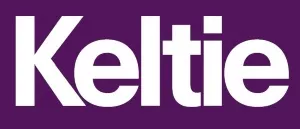A recent seminar hosted by Keltie highlighted the difficulty of registering shape and pattern marks based on inherent distinctiveness, as well as (for EU trade marks) the challenge of proving acquired distinctiveness through use throughout the EU.
Acquired distinctiveness: the LV chequerboard
The EU General Court judgment in Louis Vuitton Malletier v EUIPO (Case T-275/21) concerning the LV chequerboard pattern highlights the difficulty of proving acquired distinctiveness in the EU. This application for a pattern mark was found to be not inherently distinctive, and the applicant relied on acquired distinctiveness based on use throughout the EU. However, the Court agreed with the Board of Appeal that LV had not proved acquired distinctiveness in Latvia, Lithuania, Bulgaria, Slovakia or Slovenia.

It said LV's argument that consumers engage in homogenous behaviour as regards luxury brands was "too general in nature" and that the company had not adduced evidence to show that consumers in the relevant member states had sufficient knowledge of other markets where there was acquired distinctiveness. Moreover, LV had not demonstrated "that it had grouped those Member States in the same distribution network or that it had treated them, particularly from the marketing strategy perspective, as if they constituted one and the same market."
Robinsons, Christian Dior and the Defender
At the UK IPO, Robinsons applied for a shape mark for a container for goods in class 32, arguing that it was novel and different to others in the sector. But the Office found that the container carried labelling which itself featured source information, the average consumer was not educated (at least in this market sector) to perceive the shapes of bottles and containers as indicating trade origin, and the consumer was already accustomed to seeing a number of shapes of container performing a purely functional role.

At EUIPO, Christian Dior applied for an EU trade mark for the shape of its saddle bag, for various goods in classes 9 and 18. It argued that the goods by their nature are luxury and expensive and are aimed at initiators who pay higher attention than the average consumer and that the shape breaks from the usual codes of the market. It also provided internet search results of competing bags and spectacle cases.

However, the Board of Appeal (decision R 32/2022-2) rejected the luxury/expensive and higher level of attention claims, saying that even if goods have a quality design, it cannot necessarily be concluded that a mark consisting of the shape of those goods enables consumers to distinguish them from other undertakings. The mark applied for consisted of a combination of presentational features which are typical of the goods concerned, and therefore overall do not significantly depart from the norms and customs of the sector concerned. The mark was accepted for certain goods but not for bags/handbags/travel cases, meaning Christian Dior would have to show evidence of acquired distinctiveness for these goods.
The England and Wales High Court has also recently ruled on inherent distinctiveness of shape marks, in Jaguar Land Rover Ltd v Ineos Industries Holdings Ltd [2020] EWHC 2130 (Ch), a case concerning JLR's applications to register the shape of a vehicle (the Land Rover Defender) for various goods and services. Ineos successfully opposed the application, and the Court upheld the UK IPO decision.

While the JLR applications had some unusual and unique features, the Court said overall shape and appearance did not depart significantly from the norms and customs of the passenger car sector. The Court provided clear guidance, following the earlier London Taxi decision, that the correct approach is (1) identify the sector; (2) identify common norms and customs; and (3) decide whether the mark departs significantly from those norms and customs. Ultimately, what matters is whether a shape as a whole departs significantly from those norms and customs.
Guerlain lipstick
There was some good news for applicants for shape marks in the Guerlain v EUIPO judgment of the General Court (Case T-488/20), only available in French), which concerned Guerlain's application for a 3D mark for lipstick. Overturning the Board of Appeal, the General Court found that “the relevant public will be surprised by this easily memorable shape and will perceive it as departing significantly from the norm and customs of the lipstick sector and capable of indicating the origin of the goods concerned”.

The Court emphasised that assessment of distinctive character is not based on originality or novelty, and that the aesthetic aspect can be taken into account to determine whether the product is capable of generating an objective and uncommon visual effect. It found that several features of the mark were uncommon, surprising and memorable compared to other lipsticks.
MOON BOOT
The attempt to register the shape of the MOON BOOT as a trade mark reveals the interesting differences in approach between the EU and US. The design of the MOON BOOT after-ski boot dates back to 1969. Launched in 1971, it has become iconic and has been sold for over 50 years. It is also displayed in the Louvre among the 100 symbols of 20th century design and is part of the permanent collection at MOMA in New York and the Milan Triennale.

In 2011, applications for trade marks for the shape of the MOON BOOT were filed in Italy and the EU. Both applications were granted, after initial objections were overcome. However, the EUTM was declared invalid for some of the goods in class 25 (including footwear) following a cancellation action filed by a competitor.
This decision was upheld by the Board of Appeal and General Court (Case T-483/20). The latter stated: “The Board of Appeal was right in finding that the constituent elements of the contested mark, taken individually, and the shape of boot taken as a whole, will be perceived by the relevant public as possible, or even common, variants of the presentation and decoration of winter boots and after-ski boots, which are part of the goods at issue.”
In the US, an application was filed in 2015. It was registered based on acquired distinctiveness, after Tecnica provided evidence that it was unusual, with no taper toward the ankle, and that the relevant public perceives the combination of unusual design features to be a designation of source.
The MOON BOOT case raises several questions that were discussed during the webinar. One is that an argument based on acquired distinctiveness in the EU might be hard to substantiate, given the need to prove use throughout all member states (as in the LV case above). Another is whether there is a tension insofar as shapes unrelated to the goods and services are not objected to, while shapes that are related to the goods and services are rejected, and whether this is consistent with the law and case law (and common sense).
Takeaways for applicants
The current position means that brand owners have to plan carefully their strategies for protecting shape and pattern trade marks. It is important to identify the norms and customs of the sector, secure evidence, be creative (or even disruptive or surprising), combine different elements, consider filing with a logo (though this will limit the scope of protection), and consider other IP rights such as designs. They should also consider filing nationally within the EU, particularly in countries where acquired distinctiveness can be proved, and enforce their rights where possible – always emphasising the use of the shape as a source identifier.
The content of this article is intended to provide a general guide to the subject matter. Specialist advice should be sought about your specific circumstances.
We operate a free-to-view policy, asking only that you register in order to read all of our content. Please login or register to view the rest of this article.


